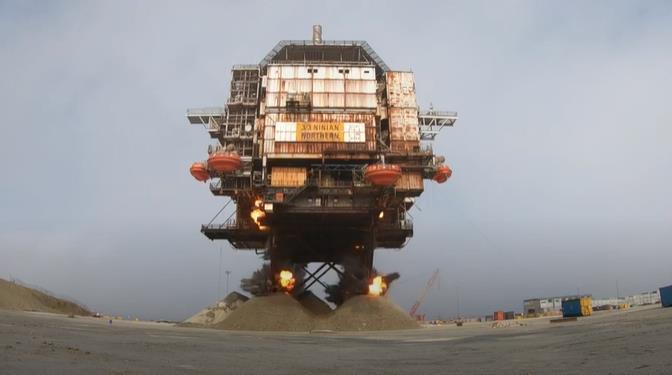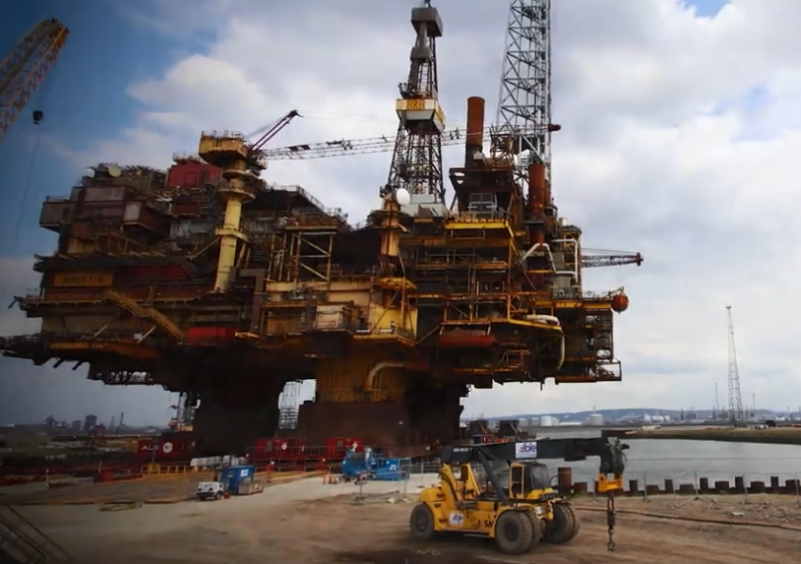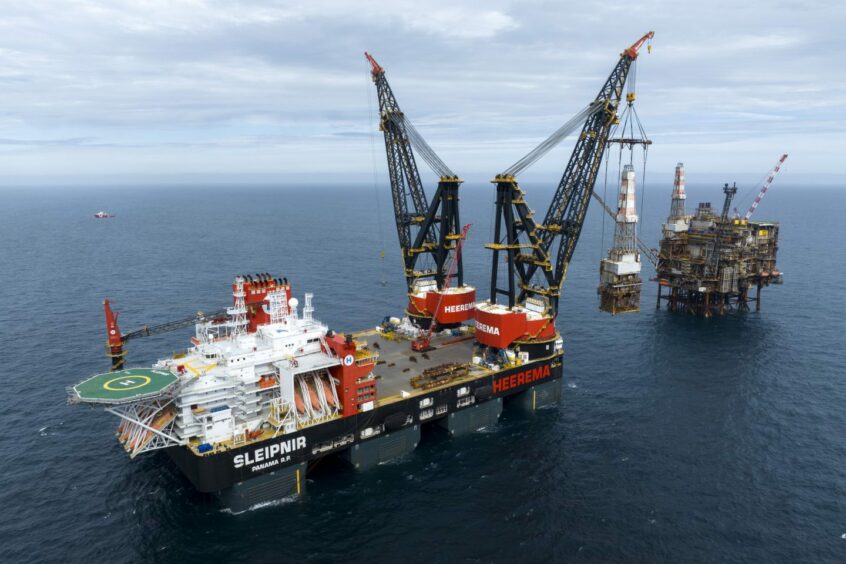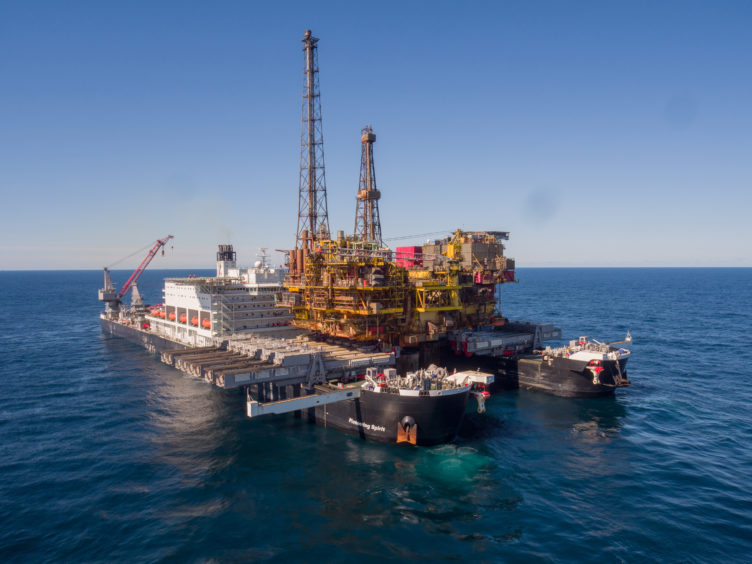
After many years of rhetoric, promise and disappointment, the long-awaited decommissioning boom appears to gathering pace.
More and more wells are being plugged and, in recent months, several large structures have been removed from the North Sea ahead of being broken up.
As the number of decommissioning campaigns increases, issues inevitably crop up, sparking debate about the best way to remove offshore assets and dispose of them safely.
Discussions range from ‘rigs to reefs’, to ‘right assets right hands’, and increasingly, ‘offshore vs onshore’.
The latter has been sparked by safety concerns around removing platforms in a single-lift and bringing them ashore to yards to be taken apart.
Too many injuries
Able UK was recently fined £200,000 after a worker suffered life-threatening injuries in 2019 while working to decommission the iconic Brent Bravo platform.
But it’s not just the Brent Bravo, and the number of industrial accidents happening at decommissioning yards has been a long-running concern for industry.
Meanwhile, there was a good deal of commotion within the oil and gas sector last year after the legs of the Ninian Northern were blown off in a controlled explosion at the Dales Voe site in Shetland.
A union boss flagged serious safety concerns, saying the structure looked at risk of “falling over at any time”.
But CNR International, which operated the platform, defended the move, hailing it as a piece of decommissioning “innovation”.
Calum Crighton, a partner at legal firm Gilson Gray, says while operators are “under the microscope of public scrutiny most of the time”, it is particularly noticeable when it comes to decommissioning.
He said: “This may be because this is the chance to ‘clean up after themselves’ after reaping the rewards of hydrocarbon production over many years.
“We have seen the negative attention that CNR’s Ninian Northern onshore controlled explosion received, despite being an entirely safe, regulated decommissioning operation. No laws were breached, nothing that wasn’t supposed to be damaged was damaged and nobody was hurt. Yet, because an offshore platform is being “blown up” onshore, it draws attention, comments and negative press.
“Of course, that isn’t a reason to automatically revert to doing as much offshore, away from prying eyes, as possible. The operators need to weigh up all options and come to an informed decision, having worked through the decommissioning planning process with the regulators and engaging with third party stakeholders.”
Different horses for different courses
Nevertheless, concerns about the general state of onshore decommissioning safety standards and the number of people getting injured haven been raised numerous times.
An alternative would be for companies to remove platform components in the order they were installed, or to cut up structures and take them away bit by bit.
The main drawback though is that both techniques take significantly longer than simply hoiking the platform out of the sea.
Operators also have to contend with the “harsh North Sea environment” while carrying out the work, Mr Crighton pointed out.
From an insurance perspective, numerous factors are at play when analysing the risk of different decommissioning methods.
Angela Flaherty, a partner at Clyde & CO and a specialist energy insurance lawyer, said: “The insurance risk profile of a decommissioning operation can vary significantly depending upon the method adopted.
“Therefore, a prospective insured must be careful to ensure that it complies with its duty to make a fair presentation of the risk to be insured, making it clear the extent of dismantling which will take place onshore.”
Christopher Graham, head of offshore decommissioning and construction at professional services and insurance firm Aon, said: “The difference is the amount of time it takes to do the decommissioning – one lift means less time and therefore the insurance period would potentially be shorter, which would therefore have some positive impact on the insurance pricing.
“However one would expect that one lift would mean the potential removal of wreck costs could be more expensive if the platform is dropped, which again would impact the insurance premium.”
Understandably, there are “positives and negatives” from all the different decommissioning methods, Mr Graham added, speed being an obvious one.
Comprehensive questioning key
In assessing the risk of any decommissioning campaign, building a clear picture of the project and associated hazards is fundamental.
Ms Flaherty said: “The insurers also have a duty to ask further questions of an insured at the underwriting stage if they are put on notice of something that merits further enquiry, such as a significant onshore dismantling operation.”
As a result of the rise in reported incidents and injuries arising from onshore decommissioning, it is therefore likely that insurers will ask “additional questions” about strategies for reducing risk.
“The reputability and loss history of the decommissioning contractors and sub-contractors will also be highly relevant to underwriters’ appetites to insure a particular decommissioning operation,” Ms Flaherty added.
A high risk industry
As is often the case, debate about what is ‘best’ should not boil down to one or the other, and as result differences in strategy don’t hold great sway over insurance premiums.
“The main insurance issues are less to do with the physical loss/damage to the asset – as they are mostly scrapped – but more to do with liability exposures arising from performing the work, removal of wreck costs if the assets being decommissioned are dropped, and additional costs that can occur if the asset or existing property is damaged,” said Mr Graham.
Mr Crighton says “the operators and the joint-ventures they operate within will always be best placed to make” the decision about how best to proceed with a decommissioning campaign.
He said: “From a practical perspective, a single lift solution may, on the face of it, reduce the likelihood of there being an offshore incident (versus piecemeal breaking up – i.e. one operation versus many smaller operations).
“On the other hand, an incident offshore with a single lift could be far more catastrophic than a smaller incident during a piecemeal decommissioning operation. Any offshore operation, particularly in the depths of the North Sea, carries significantly higher risk than onshore due to the harsh environment. If things go wrong, they can go very wrong, very quickly.”
While this may suggest that breaking up platforms onshore is preferable, it is not quite that simple.
“However, you also need to consider that the platforms have generally been stable in that environment for decades, so it may be safer and “easier” to break it up in situ rather than having to stabilise the topsides – sometimes without the legs – onshore prior to decommissioning,” Mr Crighton added.
Whichever way you swing it decommissioning is a risky business.
The size, weight, complexity and age of much of the North Sea’s furniture means there are no simple solutions to breaking up platforms.
Covering all bases
But intrinsic dangers should not allow for complacency around safety, and industry bosses have often stressed the need for onshore yards to mirror the standards achieved offshore.
Rules and regulations are currently in place, but with injuries still happening, something is clearly awry.
For its part, North Sea operators can get their houses in order and take measures to guard against potential risks.
On how operators can minimise the chance of becoming the subject of injury claims, Mr Crighton says it “can and should be managed via the commercial arrangements with contractors and subcontractors, as well as via insurance coverage”.
As is the norm within the industry, each party is accountable for damage to its own property and that of its group – that covers injuries to workers too.
Meanwhile, third party injuries are “generally the responsibility” of the party whose negligence caused it.
Mr Crighton said: “For example, if a decommissioning contractor’s employee was injured during the decommissioning of an operator’s platform, that employee may well make a claim against the operator.
“The operator should have an indemnity in its contract, stating that any injury to the contractor’s personnel remains the commercial responsibility of the contractor. The contractor has a legal obligation to hold employer’s liability insurance for that employee and its insurance policy should cover the employee’s injury claim.
“In the absence of such a provision in the contract, the operator could find itself liable direct to the contractor’s employee without any ‘back-to-back’ recourse against the contractor.
“This is nothing new for the industry and should be carried on through decommissioning operations and contracts.”
Recommended for you




 © Supplied by TAQA
© Supplied by TAQA